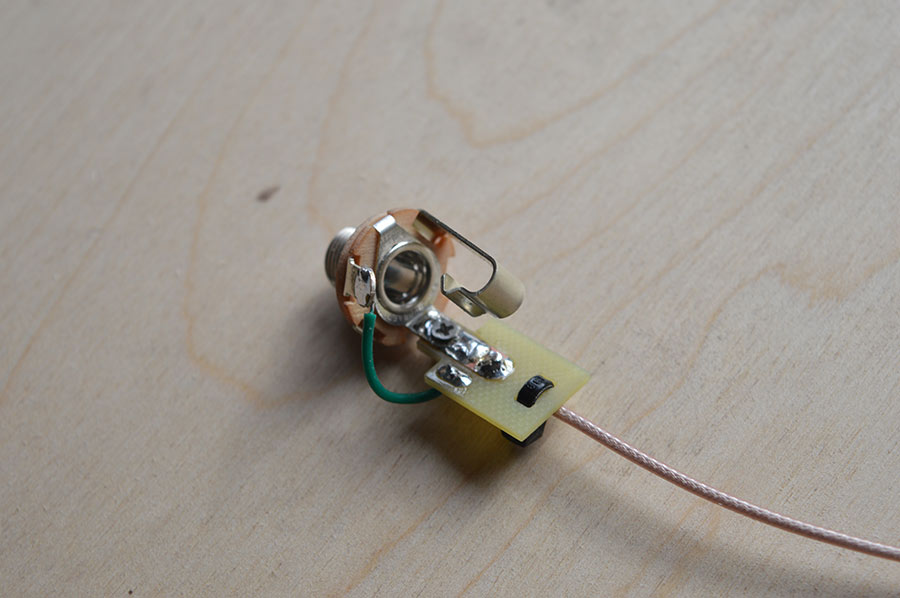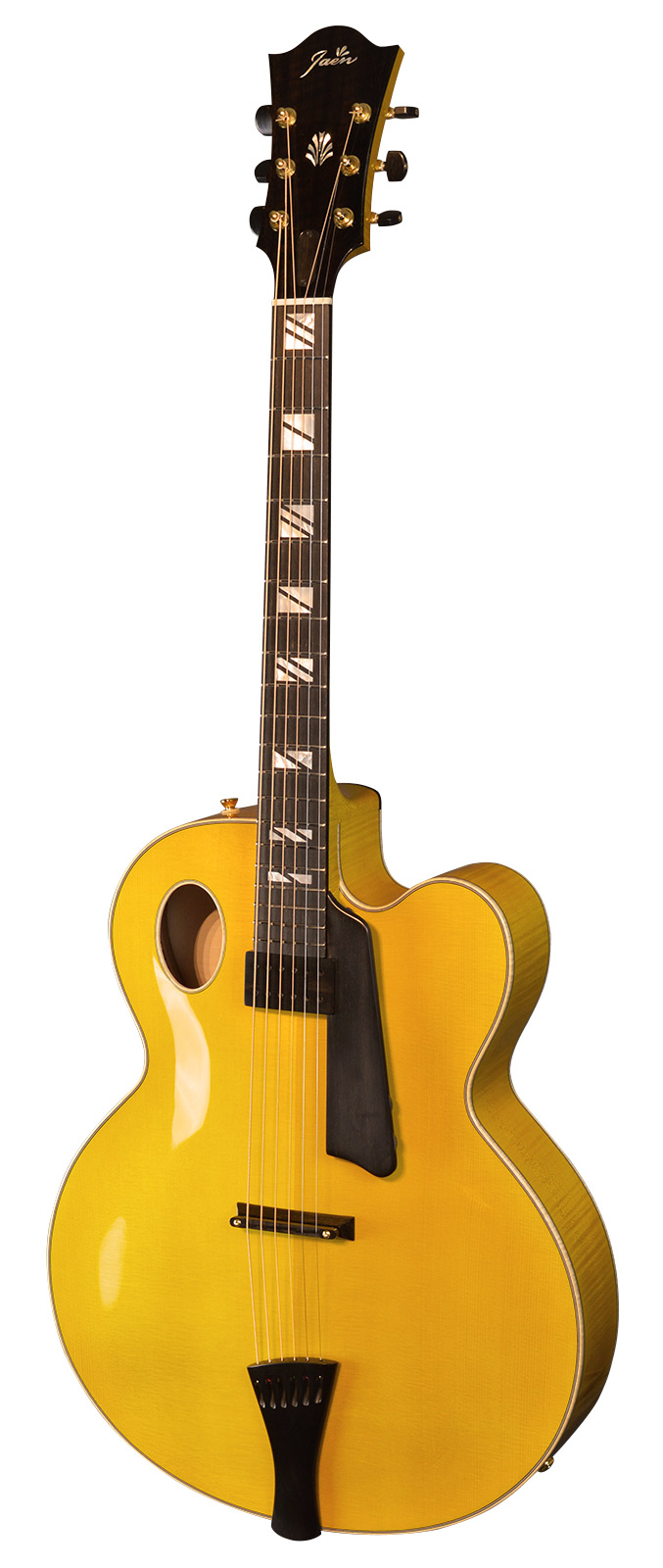I finished this guitar a few days ago. It has 17 inches, and it was going to be acoustic, but a pickup was added later.
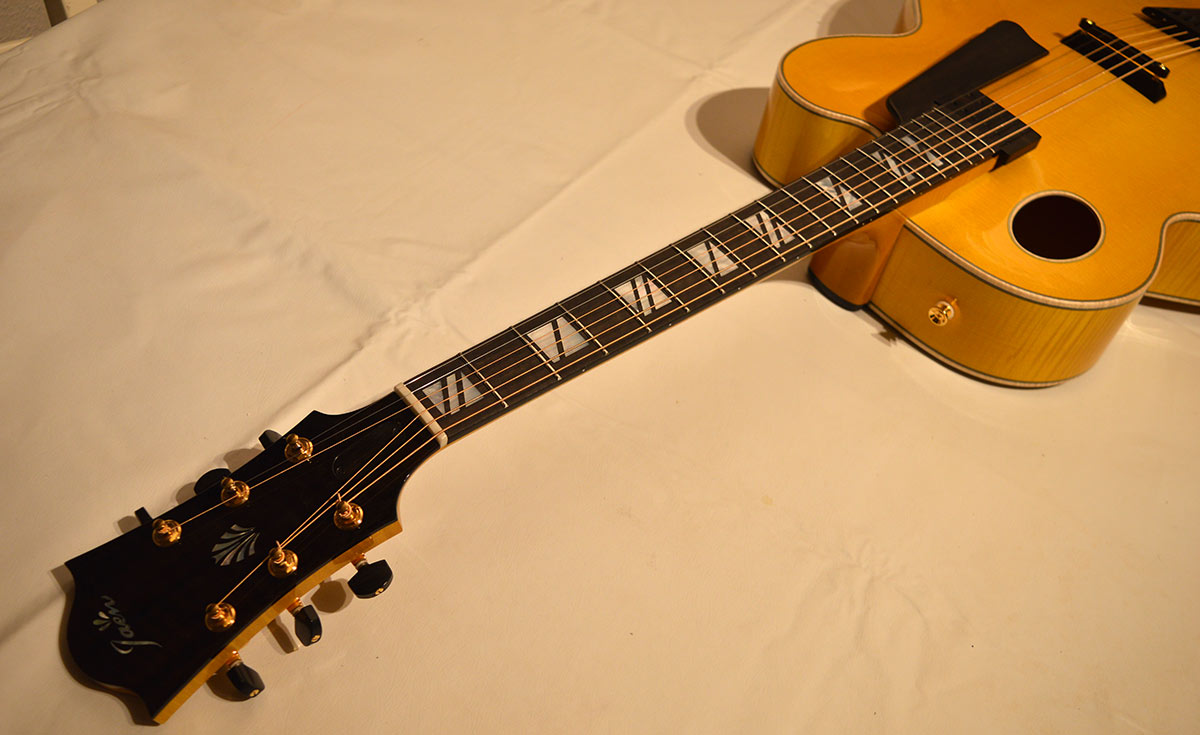
The tailpiece is taken from my Siracusa model. It has a reliable grounding system (look at the string ends):
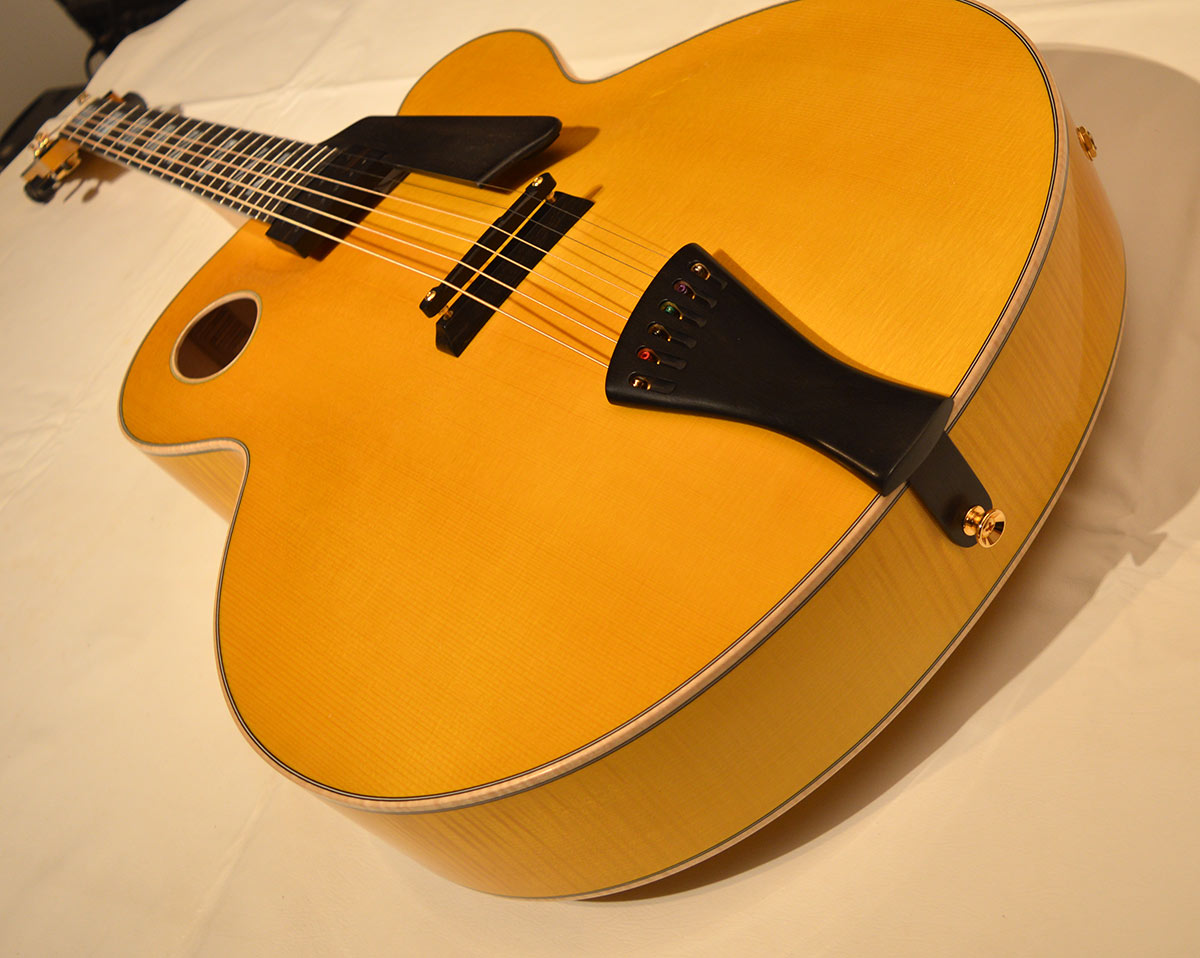
The bridge is light and hollow. The saddle is ebony outside, but internally it has a carbon fiber core that occupies almost all its volume:
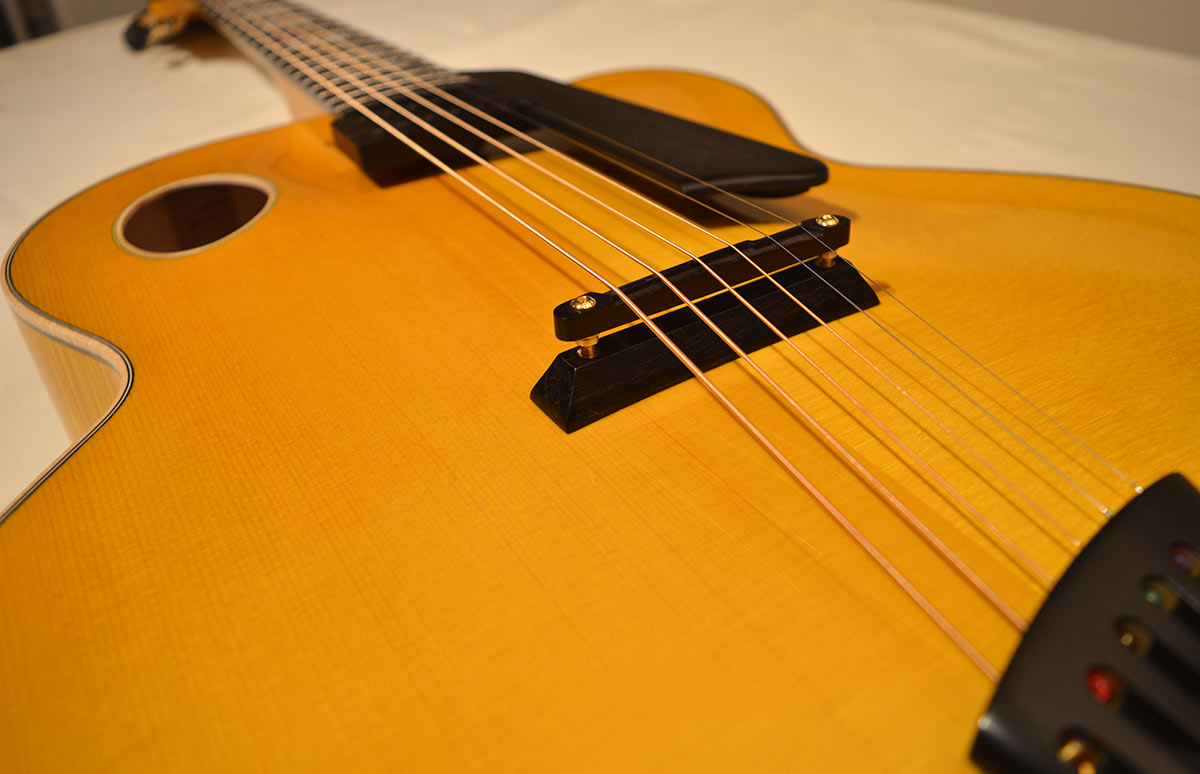
The pickup is a Type 230, my own. It has a ebony case and slim construction. This is the best pickup that I make:
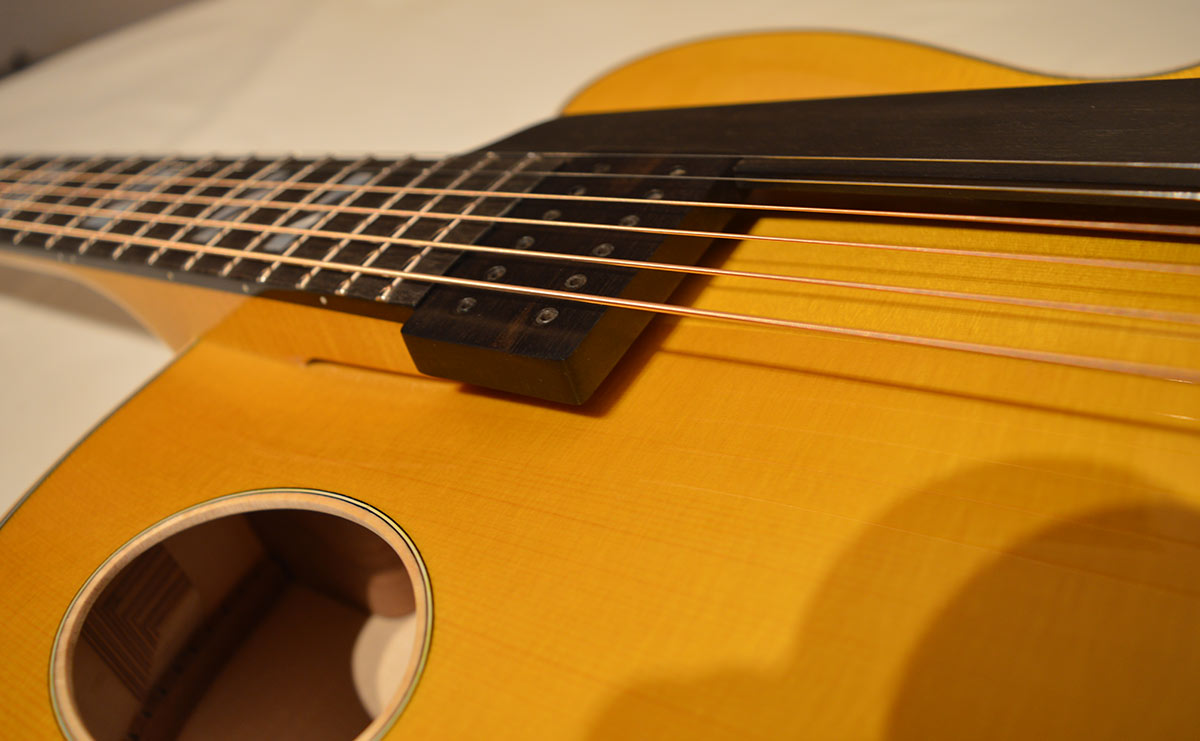
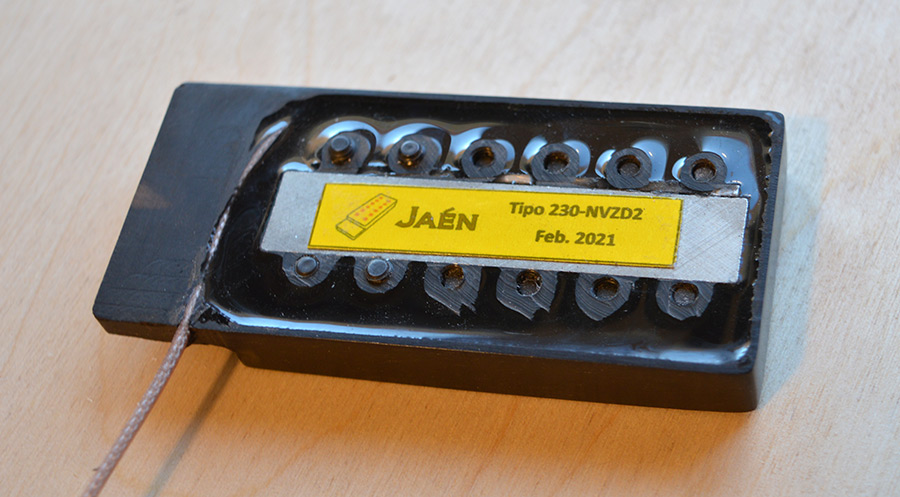
The soundhole:
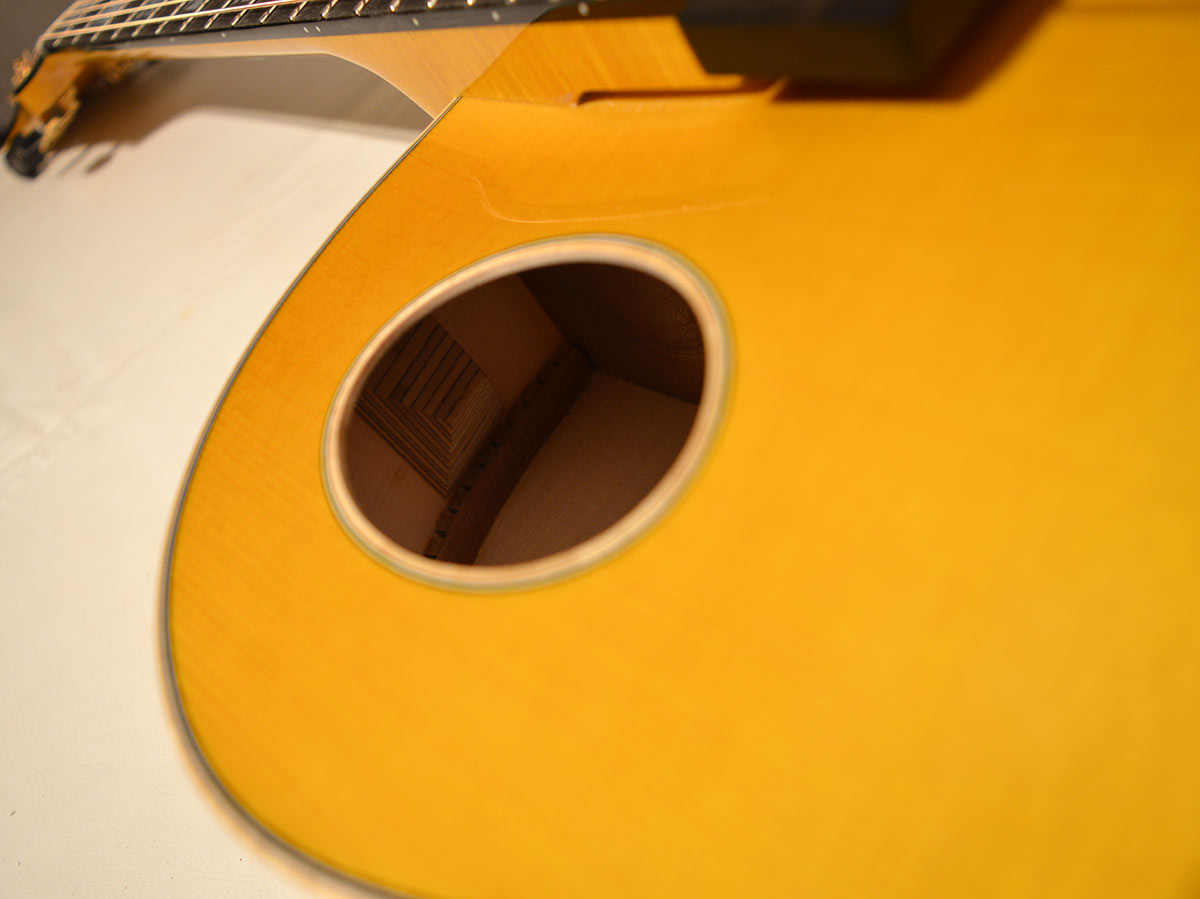
This is a very light guitar, with a very thin top and back. I have found that f-holes tend to make the top very fragile, so I prefer soundholes like this one. You can see there is a piece inside that reinforces the strap holder screw:
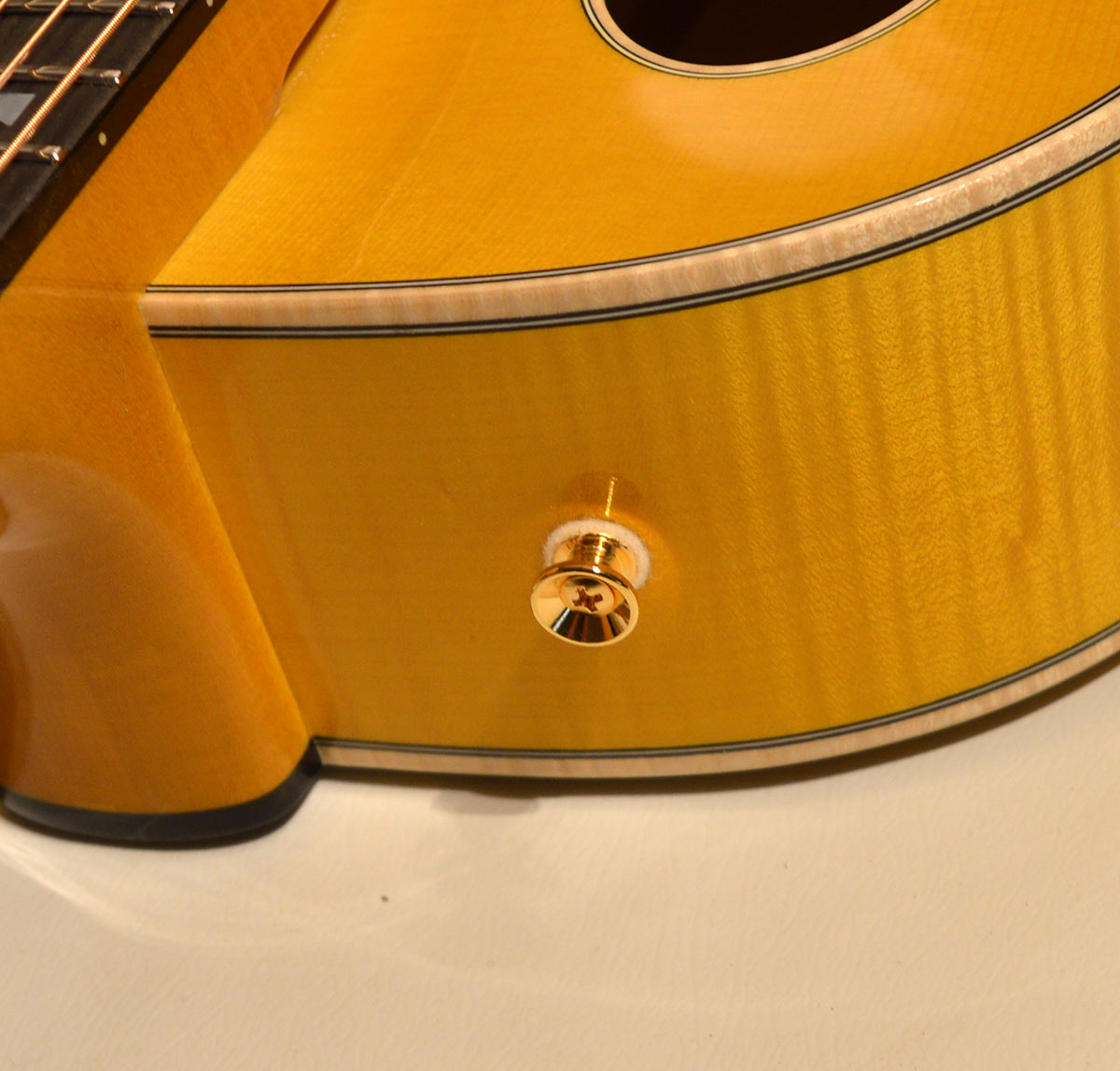
This is absolutely the best place, in my opinion. The heel is the worst place: if you use it, the lacquer line between the neck and the body will break. Bad.
The top inside, before gluing the back:
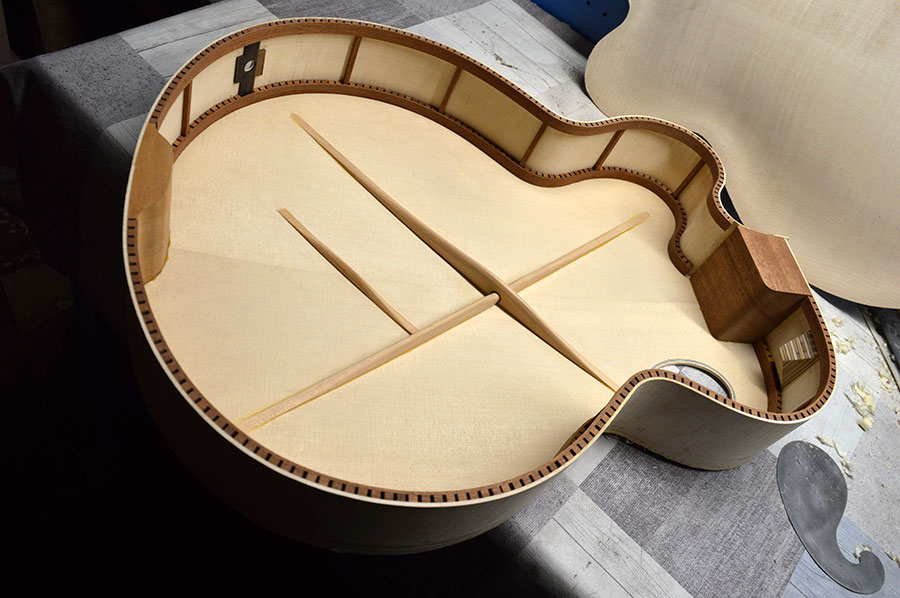
I used my new “kerfed linings” explained in this same blog some time ago.
The pickguard, with the tone and volume controls:
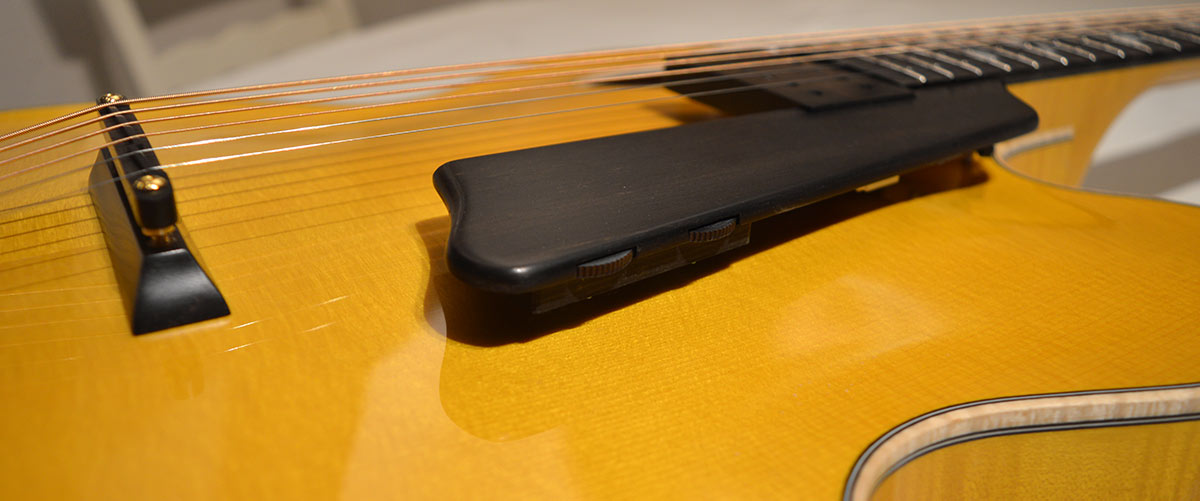
I described it in this same blog recently, so I won’t explain it:


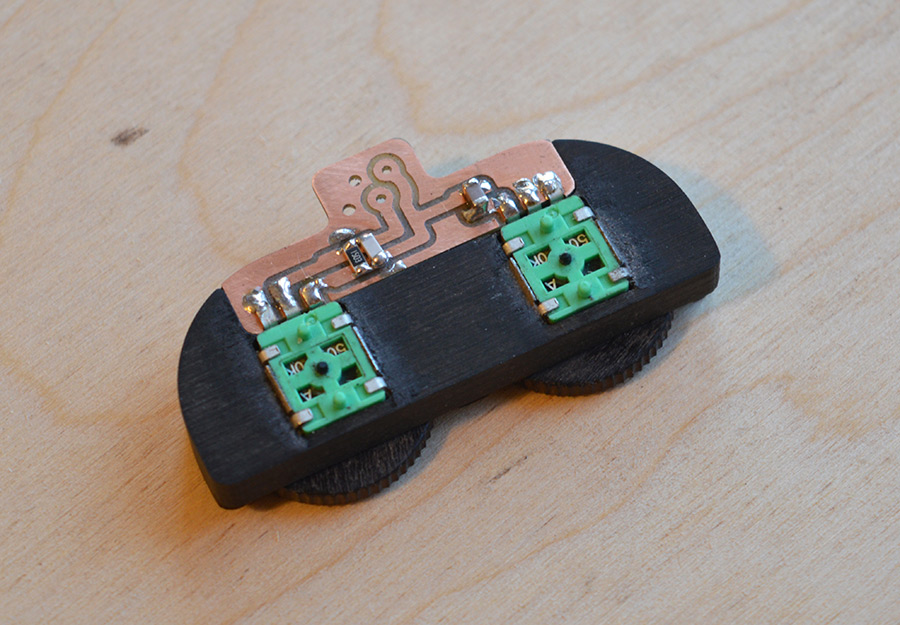
The cutaway area:
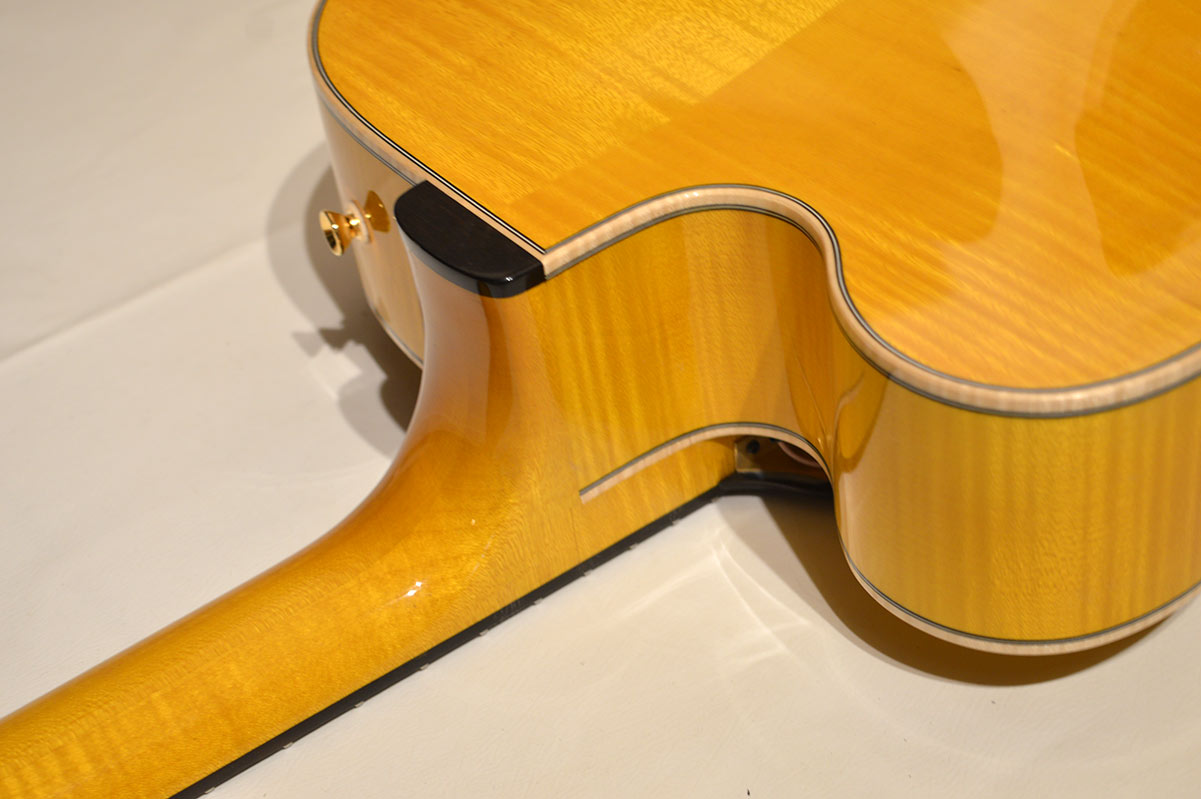
The back of the headstock:
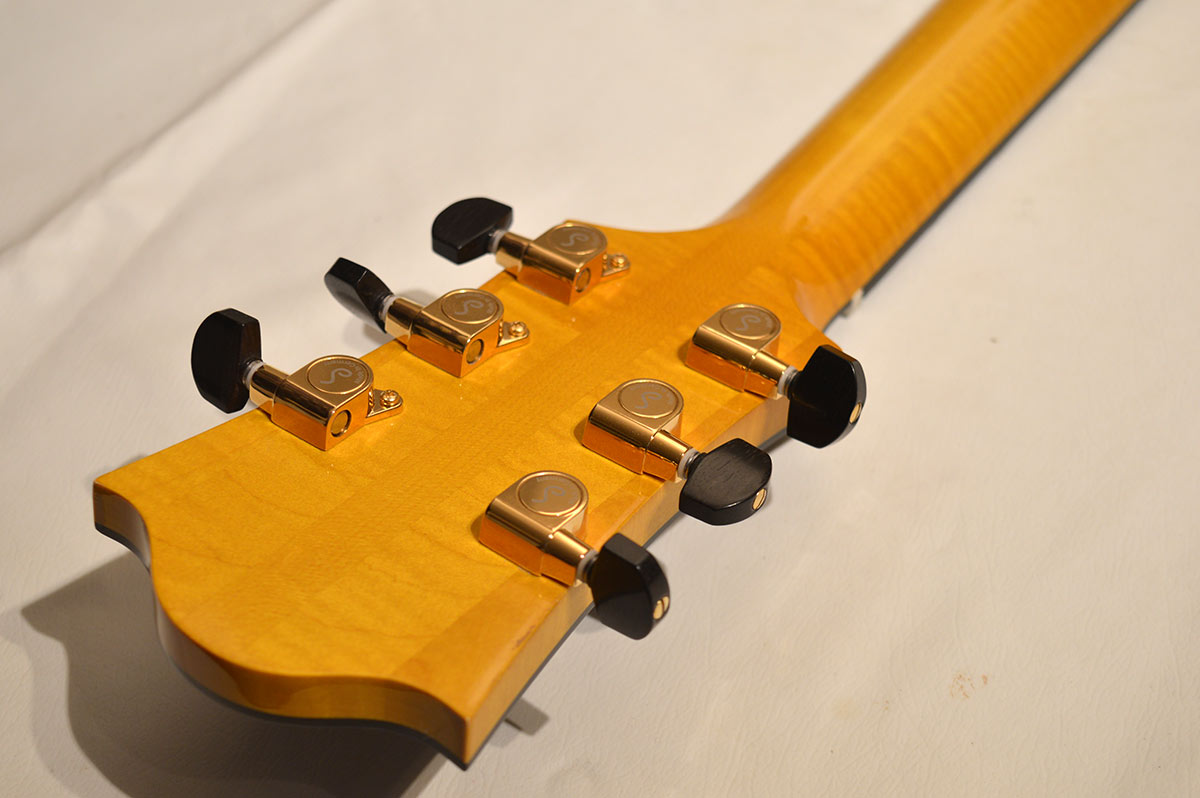
This is the shape that I use for my largest guitars (17 and 18 inches). The machines are Schaller, and I compose them with different post lengths to adapt better to the headstock taper.
The back, European curly maple:
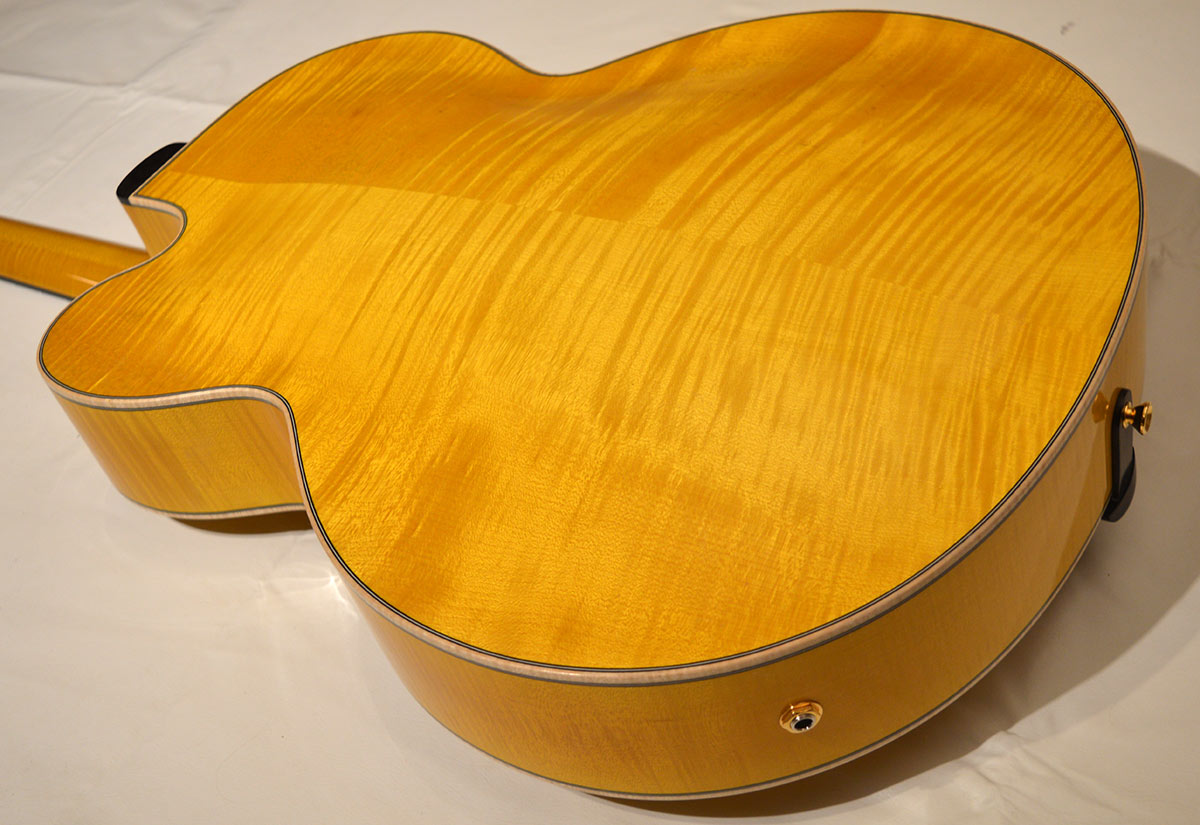
Yes, this is a guitar that’s basically acoustic, and the jack is there. Not only because I think it is the best place, but because when they go through the tailpiece, even the best connectors are not as good as old simple Switchcraft units. In any case, it has a ebony reinforcement inside:
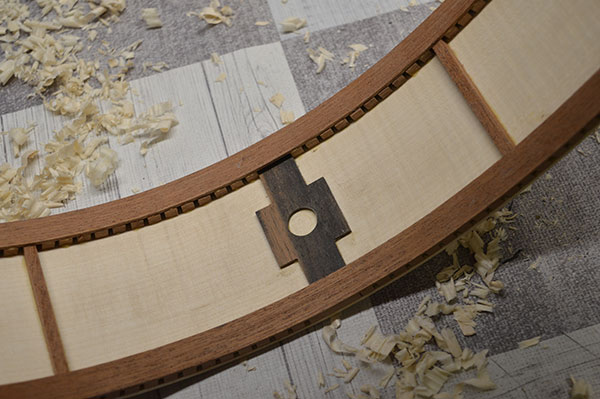
The output connector permits to tighten the cable inside the guitar so that it doesn’t touch the walls. This is a variation on one that I made for guitars with controls on the tailpiece. Simple and reliable, as I like!
